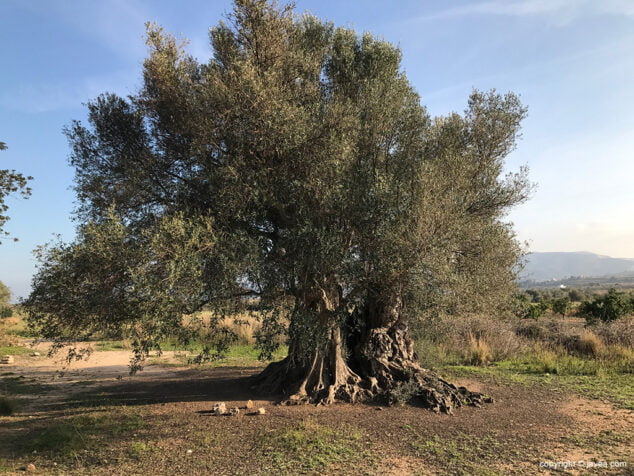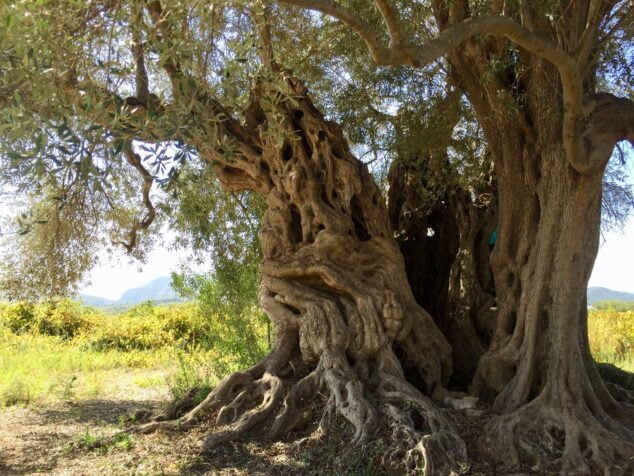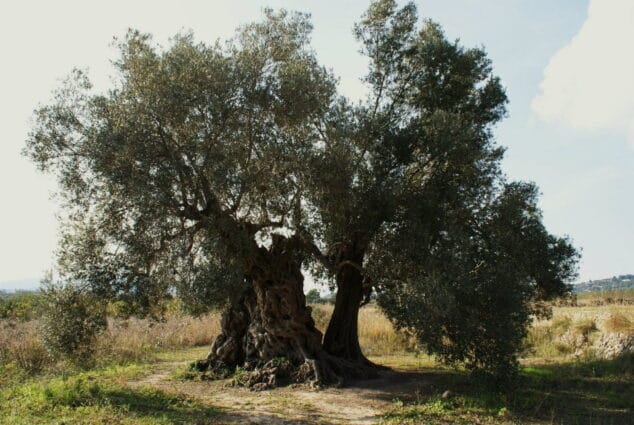A special corner that is located in the municipality of Xàbia, at the foot of Montgó, is where the Millenary Olivera is located. The olive tree dates from 1023 and is characterized by the large size of its trunk and its twisted shape. This specimen is, without a doubt, a benchmark in the agricultural landscape of Les Valls.
Next you have an index with all the points that we are going to deal with.
- 1.
- 1.1.
- 2.
- 3.
- 4.
- 4.1.
- 4.2.
- 4.3.
- 4.4.
- 5.
History
The one known as Olivera Millenaria (Olea europaea L, scientific name), dates from the year 1023, according to the website of the Olearum Association and it is located in the Partida de Les Valls, at the foot of Montgó, bordering the municipality of Dénia and Jesús Pobre. It is the only olive tree from that time that has survived in the area to this day.
At that time, Xàbia was a Muslim farmhouse, people who love olive oil, so they dedicated a large part of the territory to the cultivation of this species. In addition, in this area close to the Mediterranean, the olive trees obtain the optimal conditions for their development, since frosts are infrequent.
Olive tree dating is recognized by many as very difficult and even impossible. On the one hand, due to the difficulty of counting the rings, which in the case of this species are not distinguished with the same ease as in others; and on the other hand, because the central part of the tree is usually empty (Lousada, 2016).
On the other hand, the blog of the chronicler of the municipality of Gata de Gorgos, also refers to this olive tree, noting that the specimen is located on a plot owned by a neighbor of Gata. The olive tree is, therefore, privately owned.
Catalog of Monumental and Singular Trees
In the Valencian territory, according to article 4 of Law 4/2006 on Monumental Tree Heritage, those specimens over 350 years old, 30 meters high, 6 meters of trunk perimeter or 25 meters of perimeter greater than the cup. The ancient olive tree of Xàbia, with generic protection, is only one of the plant specimens that are included in this Catalog of Monumental and Singular Trees. When we speak of monumental trees, we refer to their great dimensions, longevity, historical significance, beauty, symbolism, etc.
Characteristics of La Olivera
The trunk of the well-known Millennial Olivera is empty in the central part and the deep wrinkles of antiquity draw curious and attractive shapes. According to Olearum, this olive tree is grafted with three different varieties of olive and its dimensions are:
- Normal perimeter: 9,30 m
- Height: 7 m
- Cup diameter: 8 m
- Estimated age: 800-1000 years.
Location
The Millennial Olivera de Xàbia is located in the vicinity of Calle Indonesia, 8; at an altitude of 70 meters above sea level.
Routes
The visit to this imposing tree specimen has become a remarkable landscape resource and a point of reference for hiking and cycling routes. It can be reached from different points of neighboring municipalities.
From Xàbia
If we take the exit from the historic center of Xàbia we will make a circular route of about 12 km (round trip) being the flat terrain and with a medium difficulty.
An example of starting the route can be from the Placeta del Convent going down Calle Ronda Colón, to link up with Calle San Joaquín. Follow the route along Camí Vell de Gata to Carrer de l'Assagador de les Valls. Once at this point, go to the Camí Vell de Pedreguer, and walk in its North-West direction and we arrive at our destination, the Olivera Millenaria.
For the return, you can choose the same route or make the circular route taking the Camí Vell de Pedreguer in its South-East direction until the Carretera de Jesus Pobre, to be crossed and take Calle Montgó. Follow the route along Camí dels Castellans to Calle Jurados, to take Carrer Dr. Borrull and return again to Placeta del Convent.
From Gata de Gorgos
Another option is to leave the vehicle in the Rana area, next to the CV-734 road that connects the town of Gata de Gorgos with Xàbia. Afterwards, we head north and cross the Les Valls ravine and the Hedra ravine, to turn right along the old path of Pedreguer until we reach the olive tree. This route has little unevenness and has a distance of 2 kilometers.
From Jesús Pobre
Another recommended option is to leave the vehicle in Jesús Pobre and look for the old road to Pedreguer. This route is circular and has a round trip of 6 km with a cumulative difference of 40 m.
From Dénia
The route is somewhat longer since it involves about 25 kilometers between round trips, so it is a good option to do this route by bicycle.
Reference sources
Bibliography:
- The website of: https://espores.org/
- The website of: http://www.olearum.es/
- The website of: http: // www.denia.net / jesus-poor-olive-millennial
- The website of: http://cronistadegata.blogia.com/









